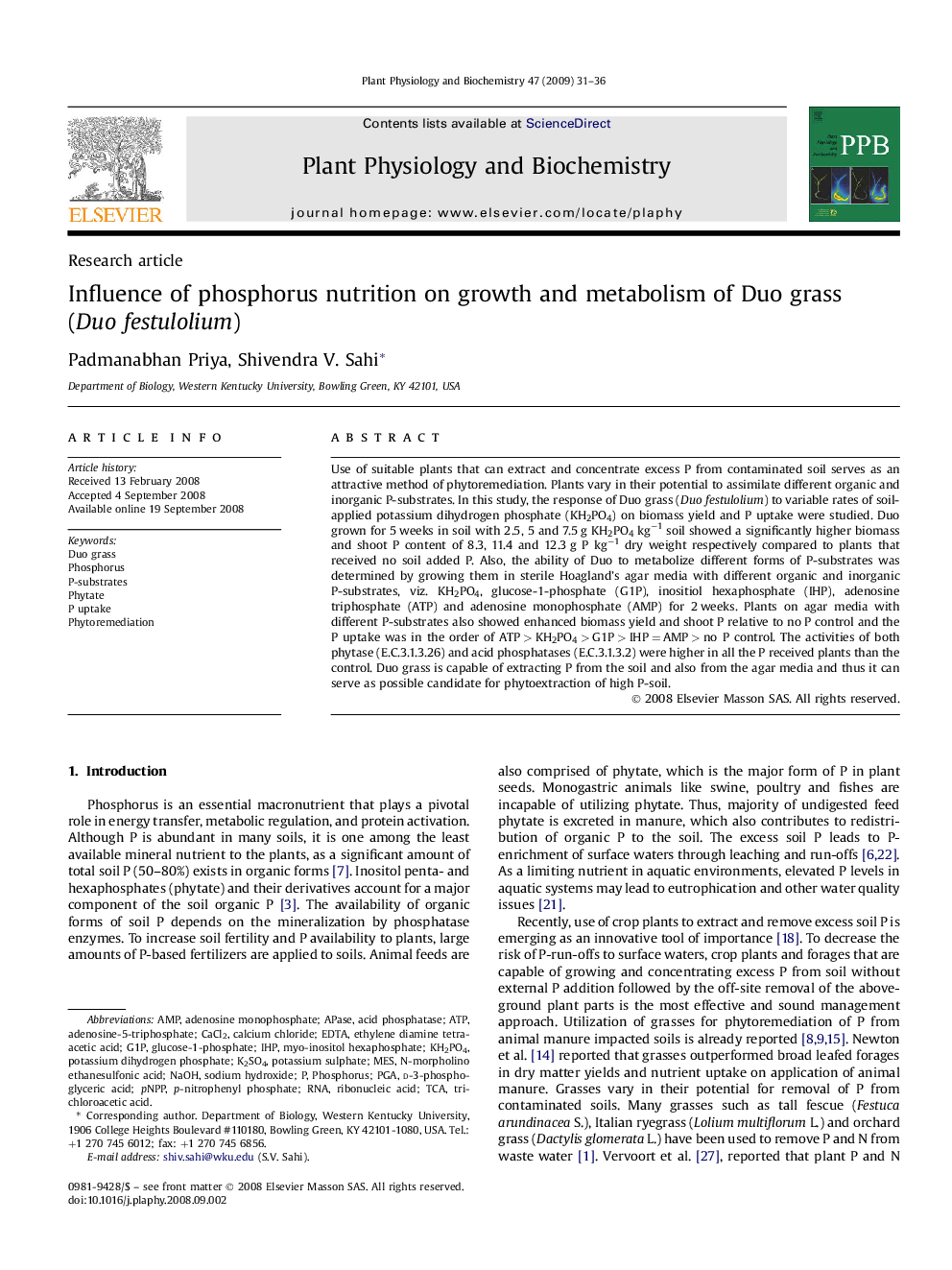| Article ID | Journal | Published Year | Pages | File Type |
|---|---|---|---|---|
| 2015416 | Plant Physiology and Biochemistry | 2009 | 6 Pages |
Abstract
Use of suitable plants that can extract and concentrate excess P from contaminated soil serves as an attractive method of phytoremediation. Plants vary in their potential to assimilate different organic and inorganic P-substrates. In this study, the response of Duo grass (Duo festulolium) to variable rates of soil-applied potassium dihydrogen phosphate (KH2PO4) on biomass yield and P uptake were studied. Duo grown for 5Â weeks in soil with 2.5, 5 and 7.5Â g KH2PO4 kgâ1 soil showed a significantly higher biomass and shoot P content of 8.3, 11.4 and 12.3Â g P kgâ1 dry weight respectively compared to plants that received no soil added P. Also, the ability of Duo to metabolize different forms of P-substrates was determined by growing them in sterile Hoagland's agar media with different organic and inorganic P-substrates, viz. KH2PO4, glucose-1-phosphate (G1P), inositiol hexaphosphate (IHP), adenosine triphosphate (ATP) and adenosine monophosphate (AMP) for 2Â weeks. Plants on agar media with different P-substrates also showed enhanced biomass yield and shoot P relative to no P control and the PÂ uptake was in the order of ATPÂ >Â KH2PO4Â >Â G1PÂ >Â IHPÂ =Â AMPÂ >Â no P control. The activities of both phytase (E.C.3.1.3.26) and acid phosphatases (E.C.3.1.3.2) were higher in all the P received plants than the control. Duo grass is capable of extracting P from the soil and also from the agar media and thus it can serve as possible candidate for phytoextraction of high P-soil.
Keywords
APasePGApNPPmyo-inositol hexaphosphatePhytateIHPTCAK2SO4KH2PO4AMPCaCl2G1PNaOHadenosine-5-triphosphatep-nitrophenyl phosphateATPadenosine monophosphateEDTAethylene diamine tetraacetic acidtrichloroacetic acidribonucleic acidRNAacid phosphataseP uptakePotassium sulphatePhosphorusMeSsodium hydroxidePotassium dihydrogen phosphateCalcium chlorideglucose-1-phosphatePhytoremediation
Related Topics
Life Sciences
Agricultural and Biological Sciences
Plant Science
Authors
Padmanabhan Priya, Shivendra V. Sahi,
